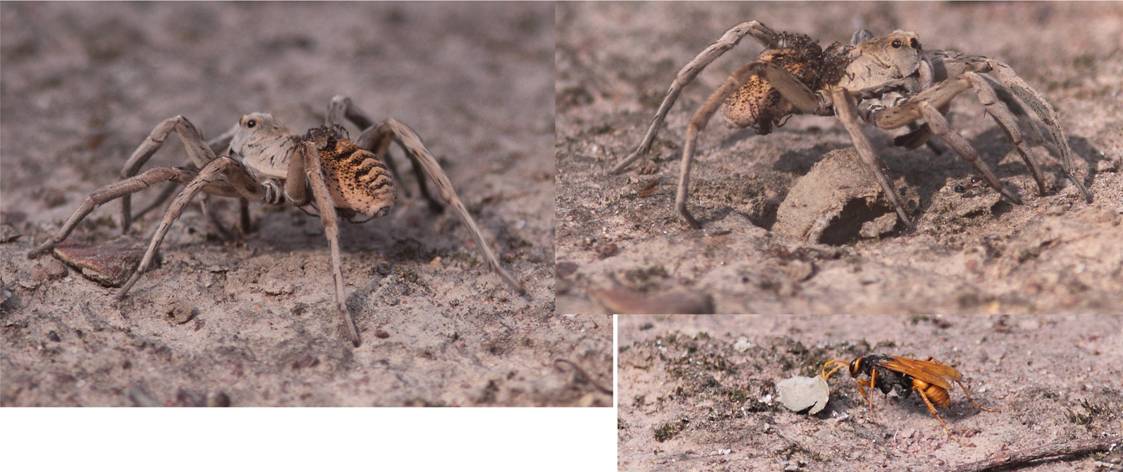Hi Geoffrey, this is good stuff.
I think you have interpreted it correctly – the wasp is definitely the
predator. It looks like a Cryptocheilus sp in the Spider Wasp family (Pompilidae).
As the name suggests most of the wasps in this family are specialist spider predators.
See http://www.brisbaneinsects.com/brisbane_wasps/POMPILIDAE.htm
They are capable of taking on
and beating spiders that are much larger than themselves. Your spider may have
been lucky to survive the encounter.
The spider is a wolf spider
(Lycosidae), females in this group regularly carry small hatchlings around on
their abdomen, even species that don’t live in burrows. http://www.brisbaneinsects.com/brisbane_spiders/Lycosidae.htm
Good site is Brisbane Insects!
Cheers
Steve
From: Geoffrey Dabb [
Sent: Wednesday, 7 April 2010 6:35 PM
To:
Subject: [canberrabirds] Easter camp-out (3)
Another little story. On the Friday afternoon I was
having a bit of a doze in my tent, just able to hear a drone of conversation
from Pat M and Ethel L. Suddenly the drone became a bit louder and I
could hear a ‘Wow!’ and ‘That’s
UNBELIEVABLE’. I didn’t do anything because it’s
not all that unusual for unbelievable things to happen at COG campouts.
When the ejaculations became even more excited I put my head out and was told
that a spider was catching a wasp that kept getting away. As I understand
it (please correct me Pat) the wasp went into a trapdoor spider hole when the
spider was out and then the spider went in after it and closed the lid.
Then the lid opened and the spider came out and then the wasp came out and
there was more of the same kind of thing.
The action was over when I got there with a camera but I got
a sort of shot of the wasp. The spider kept going in and out in rather
agitated fashion, eventually closing its lid, never to be seen again. The
only interpretation I can offer is that the wasp was the predator and all the
spider’s actions were defensive. However a close look at a detailed
snap shows that it might have had more on its mind. Clinging to the
spider – including from underneath – are at least six apparent
young. I would be surprised if a spider normally walked around encumbered
in such a way, unless it was removing its young (if that is what they are
– they don’t look like ants) from the danger presented by the wasp. It would be interesting to know just what species
the spider was, and what has been reported about its behaviour.


